14 Apr 2014
Is The ‘War On Drugs’ Nearing The End?
It’s been more than 40 years since the “war on drugs” became a popular term across the United States. Yet, arguably, the U.S. has taken a combative approach to drug use for much longer than that, beginning with the passing of the Harrison Act in 1914. This war on drugs has involved the total prohibition of many drugs, and the criminalization of drug use and addiction. However, there have been signs in the last several years that the prohibition-and-penalty approach to curbing drug use is starting to fall out of favor.
The Harrison Act
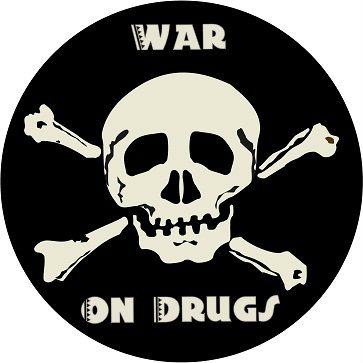 The Harrison Narcotics Tax Act of 1914 made it illegal to sell opiates or cocaine without a license. On the surface, the new law appeared to be about the moderate regulation and taxation of narcotics, rather than about outlawing them. However, the effect was to make it impossible to legally obtain cocaine or opiates. From this time on, drug users were forced to obtain their substance of choice on the black market.
The Harrison Narcotics Tax Act of 1914 made it illegal to sell opiates or cocaine without a license. On the surface, the new law appeared to be about the moderate regulation and taxation of narcotics, rather than about outlawing them. However, the effect was to make it impossible to legally obtain cocaine or opiates. From this time on, drug users were forced to obtain their substance of choice on the black market.
In theory, the language of the Harrison Act permitted doctors to prescribe narcotics. However, they were only permitted to prescribed narcotics “in the course of [their] professional practice,” which meant that they could only prescribe them to patients for treatment purposes. This language became key, because addiction was not seen as a disease at this time. As a result, prescribing narcotics to an addict was seen as illegal, because such a person was not ill.
Various other prohibition laws were passed in the succeeding years regulating substances like stimulants, steroids, hallucinogens and depressants. In 1970, all of these various laws were consolidated into a single piece of legislation that classified all legally controlled substances into various categories: the Comprehensive Drug Abuse Prevention and Control Act.
The Height Of The ‘War On Drugs’
When he created the Drug Enforcement Administration (DEA) in 1973, Richard Nixon declared “an all-out global war on the drug menace.” The phrase “war on drugs” caught on around the country and around the world as a result of this reference.
Heroin use increased rapidly in the 1960s and ’70s during the war in Vietnam, and public outcry against the drug became intense. Public pressure to curb illegal drug use, especially heroin, was at its height. There was a great deal of pressure on the government to do something to reduce drug use and the crime that was often associated with it.
The rise of the war on drugs was more than just the spreading of a catchy phrase. It marked a change in U.S. domestic policy away from treating addicts as patients and trying to solve the “root causes” of crime (such as poverty, racism, etc.) and toward a punitive approach to drug use that treated addicts as criminals. The Nixon Administration was one of the last presidential administrations to spend more money on the treatment and prevention of drug use than on the prosecution and incarceration of drug users.
In 1986, President Reagan signed the Anti-Drug Abuse Act, which created 29 mandatory minimum sentences for drug-related offenses. The percentage of the U.S. population in prison had hovered between 1 percent and2 percent since 1920, but jumped up to 8 percent between 1980 and 2008.
Signs Of A Shift In Drug Policy
Over the last two decades in particular, more and more prominent people and organizations have condemned the war approach to drug use as ineffective, expensive and unjustly punitive. Lately there have been signs that state and national policies are starting to concede to this viewpoint.
Two clear examples are the recent votes to legalize recreational marijuana in Colorado and Washington. Legal sales have begun in Colorado, and should begin in Washington by the end of 2014. Although marijuana remains a Schedule 1 controlled substance under federal law, the federal government has decided not to challenge marijuana sales in these two states. Furthermore, marijuana legalization is scheduled to appear on more state and city ballots around the country in upcoming elections.
Meanwhile, legislation on the federal level is starting to reduce the number of people in prison for drug offences. Many people hit by mandatory minimums or other harsh sentences have had their time in prison reduced by the current administration, and the United States Sentencing Commission is working to reduce even more sentences.
So far, these are relatively modest changes to the national drug policy. Nevertheless, critics of the war on drugs are encouraged by these signs that the prohibition and punishment approach that has dominated the way the U.S. combats drug abuse may finally be falling out of favor.
Marijuana as a recreational drug is now legal in Washington and Colorado, and it’s legal medicinally in 18 other states. But a recent research paper raises legitimate questions about the drug’s safety. One of proponent’s main arguments in favor of legalized marijuana has been the absence of overdose deaths associated with sole use of the drug. The article calls that assertion into question.
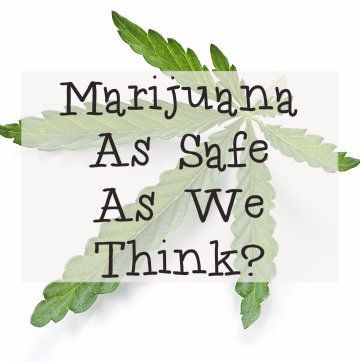 Public perception is that a person who uses marijuana on its own is safe. In fact, a 2011 U.K. Department of Health report said “no cases of fatal overdose have been reported” due to marijuana use and “no confirmed cases of human deaths” had been found.
Public perception is that a person who uses marijuana on its own is safe. In fact, a 2011 U.K. Department of Health report said “no cases of fatal overdose have been reported” due to marijuana use and “no confirmed cases of human deaths” had been found.
The new report suggests that marijuana is not quite that safe. In the study, German researchers took a look at 15 individuals whose deaths were somehow related to use of marijuana. The investigators performed careful post-mortem tests to identify and rule out other factors which may have been responsible for the deaths.
Scientists ran genetic tests, examined organs, performed an autopsy and asked for a toxicology report to screen for possible problems, such as liver disease, alcohol abuse or other conditions which could seriously compromise health and life.
Is Marijuana Overdose Possible?
One of the German researchers involved with the study said he believes marijuana overdose to be rare but possible. They discovered that two of the 15 persons were found to have the psychoactive ingredient THC in blood samples in amounts that indicated they had been using marijuana just hours before they died. In both cases the men’s hearts had experienced arrhythmia, meaning their hearts were beating either too quickly or too slowly. The change was drastic enough that it killed the two men, ages 23 and 28. One was found to have a significant but formerly undetected heart condition, and the other had a personal history of substance abuse apart from marijuana use. The study did not determine how marijuana caused the deadly arrhythmias.
The report is considered the first proof that deadly marijuana overdose is possible, even if infrequent. It suggests that further investigation is warranted into cases where marijuana use took place near to the time of death. Other risks, such as impaired memory, schizophrenia and depression have been associated with use of marijuana. Now it’s time to re-evaluate whether deadly overdose is another potential risk.
04 Apr 2014
Cocaine Use Is On A Steady Decline
Cocaine is a well-known, illegal stimulant drug of abuse. While short-term use of this drug can lead to serious or even fatal health problems, much of the public health focus on cocaine centers on its ability to produce addiction in chronic users. In a report presented in March 2014 to the White House Office of National Drug Control Policy, researchers from the RAND Corporation made detailed estimates of the number of chronic cocaine users in the U.S. from 2000 to 2010. Unlike most previous efforts, which include only the overall total of chronic users, these estimates also specify levels of involvement in chronic cocaine use.
Who Is Using Cocaine?
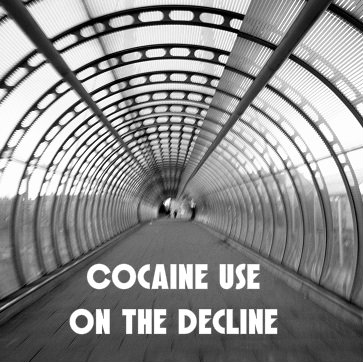 A federal agency called the Substance Abuse and Mental Health Services Administration uses a yearly project called the National Survey on Drug Use and Health to estimate the number of people in the U.S. who use any amount of cocaine in the average month. According to the most recent figures from this survey (reported in late 2013), roughly 1.6 million adults and teenagers used the drug in a representative month in 2012. This number represents about 0.6 percent of the entire U.S. population age 12 or older. Since 2002, the highest reported rate of monthly cocaine use is 1.0 percent; the rate reached this peak in three years: 2003, 2005 and 2006. Cocaine use has been trending pretty steadily downward since 2006, with a low monthly rate of 0.5 percent reported in 2011.
A federal agency called the Substance Abuse and Mental Health Services Administration uses a yearly project called the National Survey on Drug Use and Health to estimate the number of people in the U.S. who use any amount of cocaine in the average month. According to the most recent figures from this survey (reported in late 2013), roughly 1.6 million adults and teenagers used the drug in a representative month in 2012. This number represents about 0.6 percent of the entire U.S. population age 12 or older. Since 2002, the highest reported rate of monthly cocaine use is 1.0 percent; the rate reached this peak in three years: 2003, 2005 and 2006. Cocaine use has been trending pretty steadily downward since 2006, with a low monthly rate of 0.5 percent reported in 2011.
What Are The Levels Of Chronic Use?
Chronic drug users are users who consume any given substance repeatedly over time. However, not all chronic users consume drugs with the same level of frequency. On the low end, a chronic cocaine user may consume the drug from roughly four to 10 days in any 30-day time period. Moderate to heavily involved chronic users may consume the drug from 11 to 20 days within the same time period. The heaviest chronic users consume cocaine on at least 21 days within a given month. Any chronic user runs the risk of developing (or already having) diagnosable problems with cocaine abuse or cocaine addiction (both of which are classified as specific forms of a condition called stimulant use disorder). However, as a rule, heavy chronic users have the most seriously elevated risks. In addition, heavy chronic users account for a large percentage of the overall amount of cocaine consumed in any segment of the population.
How Many Chronic Cocaine Users Are There?
In the report presented to the White House Office of National Drug Control Policy, the RAND Corporation researchers used information gathered from the National Survey on Drug Use and Health, the federally sponsored Arrestee Drug Abuse Monitoring Program and several other sources to estimate the number of Americans involved in chronic cocaine use in the first decade of the 2000s. In all likelihood, the total number of chronic users in 2010 (the last year under consideration) was roughly 2.5 million. For the sake of accuracy, the report also includes a low potential figure of 1.6 million chronic users and a high potential figure of 3.9 million chronic users. Most of the chronic cocaine users (1.3 million) consumed the drug four to 10 days per month. Another 500,000 chronic users consumed the drug somewhere in the range of 11 to 20 days per month. In addition, 600,000 chronic users consumed cocaine at least 21 days per month.
Past And Present Cocaine Use
The highest reported number of likely chronic cocaine users between 2000 and 2010 was 3.3 million in the year 2000. Totals for the following six or seven years were fairly close to this peak. However, a downward trend in the number of chronic users began in 2006 and continued through the end of the period under consideration.
The estimate of cocaine use reported by the RAND Corporation is consistently higher than the estimate provided by the National Survey on Drug Use and Health. The difference between the two projects can be broadly attributed to the wider number of sources used by the RAND Corporation researchers, and more specifically attributed to the inclusion of data from the Arrestee Drug Abuse Monitoring Program (which gathered information from people who were incarcerated or otherwise involved in the criminal justice system). The RAND Corporation researchers note that total cocaine use (among both occasional and chronic users) fell by close to 50 percent between 2006 and 2010.
Find Out How An ADHD Medication Disrupts Cocaine Addiction
03 Apr 2014
Why Is Substance Abuse Rising Among Seniors?
Drug abuse is not only for the young. Statistics indicate that seniors are using and abusing drugs at an ever increasing rate. It’s a problem that not many are willing to talk about openly, but the risks to our older loved ones are great and it is an important issue to address. The biggest problems when it comes to substance abuse in the elderly are alcohol and prescription drugs. If you care for an older friend or family member, be aware of the possibility of substance abuse and know the signs so you can step in and help.
Why Are Seniors Abusing Drugs And Alcohol?
 There are several reasons older Americans are abusing substances in growing numbers. One explanation is that the population of seniors has been growing as the baby boomer generation ages. That population age shift, however, is not the only issue. Socializing often drops off with retirement and aging. With loneliness may come self-medication with alcohol or readily available prescription medications. Another possible issue is mental health. Many seniors either do not recognize the signs of mental health problems in themselves, or they are embarrassed to seek treatment and turn to self-medication instead of getting professional help.
There are several reasons older Americans are abusing substances in growing numbers. One explanation is that the population of seniors has been growing as the baby boomer generation ages. That population age shift, however, is not the only issue. Socializing often drops off with retirement and aging. With loneliness may come self-medication with alcohol or readily available prescription medications. Another possible issue is mental health. Many seniors either do not recognize the signs of mental health problems in themselves, or they are embarrassed to seek treatment and turn to self-medication instead of getting professional help.
What Are The Dangers Of Senior Substance Abuse?
Substance abuse is risky and dangerous for anyone at any age, but the elderly are particularly vulnerable to the consequences. Many seniors have several prescriptions for medical reasons. Mixing these drugs with each other and with alcohol can have serious and even fatal outcomes. Between 20 percent and 30 percent of adults over the age of 75 have a problem with drinking, which means that the possibility for harmful interactions is great.
Abusing drugs and alcohol, or both, causes dangerous side effects for seniors. These include sleeping problems, delirium and cognitive issues, difficulty balancing and an increased number of falls, and depression and anxiety.
How To Recognizing The Signs Of Substance Abuse
If you think it is impossible that your older loved one is abusing drugs, take a look at the facts. According to Johns Hopkins Medical School, 12 percent to 15 percent of older adults who seek medical help for any reason are abusing prescription drugs. While some also abuse illegal drugs, prescriptions are the real issue. As with people in other age groups, seniors may underestimate the harm that these legal drugs can cause. Opioid painkillers and benzodiazepines are among the most frequently abused. Make sure you know the signs of abuse so you can recognize them in your older loved one.
The most important thing to look for is change. Any kind of change in regular habits or behaviors may indicate a drug abuse problem, or a medical problem. In either case, your loved one will need to see a doctor. With drug abuse, you may see changes in sleeping habits and appetite. Look for unexplained weight loss or gain. An increased number of falls or injuries can indicate inebriation. Changes in mood, such as irritability, agitation or confusion often accompany drug abuse. Also be suspicious if your loved one is seeing multiple doctors or filling prescriptions in several different pharmacies.
Seniors substance abuse is a growing problem and one that could have serious individual and public health implications. The consequences of abusing drugs and alcohol become more serious as we age. Take good care of your older loved ones and always have your eyes open to the signs of abuse. Intervening is important and could prevent harm and even save a life.
Methamphetamine is a highly addictive stimulant drug of abuse that produces substantially more profound effects on normal brain chemistry than cocaine. Repeated, long-term (i.e., chronic) users of this drug have very strong chances of developing diagnosable issues with drug abuse and drug addiction. In March 2014, researchers from the RAND Corporation presented the White House Office of National Drug Control Policy with a detailed report that, among other things, estimates the number of Americans affected by chronic methamphetamine use from 2000 to 2010. This report also breaks down chronic users of the drug into three levels of habitual intake.
What Constitutes A Meth User?
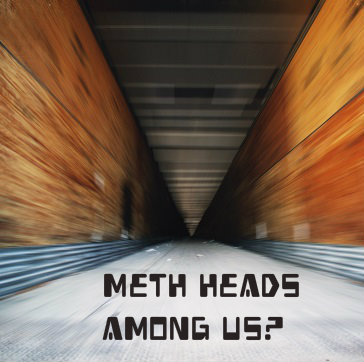 Each year, federal researchers from the Substance Abuse and Mental Health Services Administration use a project called the National Survey on Drug Use and Health to estimate the overall prevalence of methamphetamine use among American teenagers and adults. Figures released in late 2013 for the 2012 version of this survey indicate that 0.2 percent of the total population age 12 or older used the drug in an average or representative month. In raw numbers, this equates to about 440,000 people. In addition, approximately 0.4 percent of the teen and adult population used methamphetamine at some point during the entire survey year. This percentage equates to roughly 1.2 million people. Another project funded by the National Institute on Drug Abuse, called Monitoring the Future, tracks methamphetamine use among all 8th, 10th and 12th graders. All told, about 1 percent of students enrolled in these three grades used the drug at least one time in 2012.
Each year, federal researchers from the Substance Abuse and Mental Health Services Administration use a project called the National Survey on Drug Use and Health to estimate the overall prevalence of methamphetamine use among American teenagers and adults. Figures released in late 2013 for the 2012 version of this survey indicate that 0.2 percent of the total population age 12 or older used the drug in an average or representative month. In raw numbers, this equates to about 440,000 people. In addition, approximately 0.4 percent of the teen and adult population used methamphetamine at some point during the entire survey year. This percentage equates to roughly 1.2 million people. Another project funded by the National Institute on Drug Abuse, called Monitoring the Future, tracks methamphetamine use among all 8th, 10th and 12th graders. All told, about 1 percent of students enrolled in these three grades used the drug at least one time in 2012.
The Levels Of Chronic Meth Use
All chronic drug users repeatedly take a given substance over time. However, the actual frequency of intake between different chronic users can vary quite substantially. For instance, “low level” chronic users may regularly take a drug about four to 10 days a month. “Moderate- to high-level” chronic users may regularly take a drug about 11 to 20 days a month. The most extreme level of chronic use involves drug intake on a minimum of 21 days a month. Chronic drug use and the onset of diagnosable abuse and addiction typically go hand in hand. Compared to other habitual users, heavy chronic users commonly experience particularly intense forms of these problems. In the U.S., diagnosable cases of methamphetamine abuse and addiction fall under the heading of a larger condition called stimulant use disorder, which also encompasses abuse and addiction associated with the use of cocaine, amphetamine and other stimulant substances.
How Many Chronic Methamphetamine Users Are There?
In the report presented to the White House Office of National Drug Control Policy, the research team from the RAND Corporation used data gathered from several well-regarded sources to calculate how many people in the U.S. qualified as chronic methamphetamine users for each year between 2000 and 2010. Among others, these sources included that National Survey on Drug Use and Health and a periodically conducted project called the Arrestee Drug Abuse Monitoring Program, which tracked drug use rates in people who get arrested or otherwise come under the jurisdiction of the criminal justice system. In 2010, the most likely total number of chronic methamphetamine was about 1.6 million. The actual number of affected individuals may have been as low as 700,000 or as high as 2.7 million. For a number of reasons (including the relatively high rate of drug use among incarcerated individuals), the figures from the RAND report are substantially higher than the estimates produced by the National Survey on Drug Use and Health.
Roughly 600,000 of the people classified as chronic methamphetamine users in 2010 took the drug on four to 10 separate days per month. A slightly smaller number of chronic users (500,000) took the drug on 11 to 20 separate days per month. In addition, about 500,000 chronic methamphetamine users took the drug on 21 or more separate days per month.
The authors of the RAND Corporation report note that it’s quite difficult to accurately determine how many people in the U.S. have been involved in chronic methamphetamine use since the beginning of the 2000s. These difficulties stem largely from changes in the programs used to gather information on methamphetamine use. For example, methods employed by the National Survey on Drug Use and Health to calculate this use were changed significantly in 2007. In addition, there is only incomplete information available from the Arrestee Drug Abuse Monitoring Program (which also completely lost its federal funding in 2012).
Read About How Bath Salts Are 10 Times More Addictive Than Meth
13 Mar 2014
Pregnant And Addicted – What Now?
Battling addiction and striving to achieve sobriety are some of the most difficult challenges a person can face. Addicts have to suffer through terrible withdrawal symptoms while detoxing, go through therapy and rehab and then face a lifelong struggle with the prospect of a relapse. Now imagine facing this demon while pregnant; it is the struggle that too many women encounter. Along with the difficulty of coming clean, they face the shame and embarrassment, the possibility of losing their children and unique health challenges. Getting sober is essential for the health of the mother and the baby.
What Are The Barriers To Treatment For Expecting Mothers?
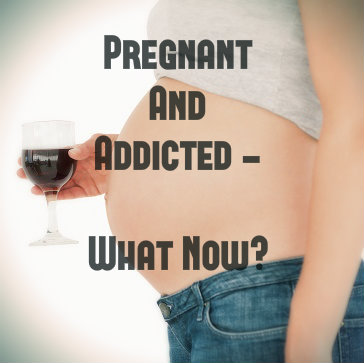 For many women who find themselves both addicted to drugs and unexpectedly pregnant, the idea of getting help is a daunting one. Women in this position tend to feel extreme guilt, shame and fear. A pregnant woman needing addiction treatment may avoid getting help for fear of being judged and vilified. She may also face the fear of losing her newborn after admitting to being an addict.
For many women who find themselves both addicted to drugs and unexpectedly pregnant, the idea of getting help is a daunting one. Women in this position tend to feel extreme guilt, shame and fear. A pregnant woman needing addiction treatment may avoid getting help for fear of being judged and vilified. She may also face the fear of losing her newborn after admitting to being an addict.
What addicted pregnant women need is compassionate care from doctors and other health professionals who understand the special needs of these patients. Without care, these women and their children will suffer. For instance, some women may try to take the matter into their own hands and quit cold turkey, which can actually be harmful to the baby.
The Consequences Of Addiction On The Fetus
For the unborn child, the consequences of a mother’s addiction can be serious. The baby will most likely be born with neonatal abstinence syndrome. This is a collection of symptoms caused by the drugs the mother uses. The baby is born addicted and then experiences withdrawal. Symptoms may include blotchy skin, poor feeding habits, irritability, diarrhea, high-pitched crying, seizures, insomnia, slow weight gain, fever, sweating, trembling and vomiting. Withdrawal in the baby is not the only concern; drug use can lead to complications during labor and delivery.
Pregnant Addicts On The Rise – Finding Solutions
As the number of people in the U.S. addicted to opioids (prescription painkillers and heroin) rises, the number of mothers and infants affected also rises. Statistics indicate that the number of babies born with neonatal abstinence syndrome has more than doubled in the last six years. In 2012, nearly 6 percent of pregnant women were using illegal drugs. The increases are being seen across the country and among all demographic groups. The healthcare costs are rising with the number of addicted babies.
Healthcare professionals are stepping up and looking for solutions to treating these women and their babies. With compassion and tested methods for treatment, they can help women feel comfortable asking for help with addiction. More hospitals and addiction centers are offering specialized care for pregnant women as the problem grows. Although many experts in the past have considered use of maintenance drugs, like methadone, to be bad for the unborn child, doctors now know that maintenance is often the best option. Withdrawal in the pregnant mother can be very dangerous for the baby.
Many of these new programs include not just cutting-edge treatment for addiction in the mother, but also the goal of continuing that care after the baby is born to ensure the mother has the best chance of staying sober and caring for her children. The programs also include plans for reducing complications during delivery and maximizing the odds of having a healthy baby. Many plans also help these new mothers with family planning and parenting skills, as well as long-term care for themselves and their children. With good care that is specialized for their needs, pregnant women have hope for a successful birth and healthy child.
Read More About Drinking During Pregnancy And Find Out Why Women Continue To Drink
Seniors make up 13 percent of the population of the United States, yet they account for more than one-third of the prescription medications. One-half of all seniors were taking at least three prescription medications as of the year 2000, up from one-third in 1988.
With so many seniors taking prescription drugs, it shouldn’t be surprising that they are a part of the rising problem of prescription drug abuse. Nevertheless, senior drug abuse remains a largely hidden problem, in large part because elderly people do not fit the common profile of someone dealing with drug abuse or addiction.
In the coming decades, this problem can only be expected to grow. Seniors are one of the fastest growing segments of the population, as the first wave of the baby boom generation has reached senior citizen status. By 2030, seniors are expected to make up one-third of the country’s population.
What Are The Hidden Symptoms Of Senior Addiction?
 Identifying the signs and symptoms of drug problems in seniors presents various challenges. One of the biggest difficulties is the fact that a number of these signs and symptoms can mirror normal signs of aging.
Identifying the signs and symptoms of drug problems in seniors presents various challenges. One of the biggest difficulties is the fact that a number of these signs and symptoms can mirror normal signs of aging.
Among the symptoms of drug use that may be mistaken for signs of aging are disorientation, poor balance, memory loss, chronic boredom, depression, shaky hands, poor balance and mood swings. Since seniors do not fit the stereotypical profile of someone with drug problems, recognizing when such symptoms spring from drug use and not just aging is a challenge for loved ones and health professionals alike.
Drug Abuse Vs. Misuse – Is There A Difference?
When examining drug problems among seniors, it is helpful to make the distinction between drug abuse and drug misuse. Drug misuse refers to the use of prescription medications in a way that does not comply with the prescription instructions. Drug misuse can be entirely unintentional, and the result of unclear instructions or confusion. Drug misuse can also be intentional; for example, patients may take more than the prescribed dose without consulting their doctor if they feel that the prescribed dose is not having an effect. In general, the term misuse is used to refer to the incorrect use of legitimately prescribed drugs, with the intent of treating an established medical problem.
In contrast, drug abuse refers to people who use drugs for recreational purposes. They may abuse illegal drugs that have no therapeutic purpose, or they may use therapeutic drugs incorrectly in order to achieve a euphoric high or some other pleasurable feeling.
Both drug misuse and drug abuse can result in drug dependence and other negative side effects. However, drug misuse is usually the easier problem to solve. The most common reason for drug misuse is an ineffective treatment plan, and the problem will usually disappear if treatment is revisited and a more effective plan put in place.
Drug abuse among seniors is much less common than drug misuse. Nevertheless, the problem does exist for 12 to 15 percent of elderly people who seek medical help.
What Are The Commonly Abused Drugs Among The Elderly
Opioid drugs, depressants, stimulants, benzodiazepines and over-the-counter (OTC) medications are the drugs most frequently abused among seniors. Opioids are typically prescribed for pain relief; depressants are prescribed for anxiety and sleep disorders; stimulants are prescribed for narcolepsy and ADHD; and benzodiazepines for anxiety and insomnia.
Opioids are particularly dangerous drugs to abuse or misuse because they are extremely addictive. These medications are chemically similar to the illegal drug heroin, and can be just as addictive as heroin when used incorrectly.
After prescription drugs, alcohol is the most commonly abused substance among the older adult population. OTC medications can react poorly with alcohol, leading to negative consequences that would not otherwise be present with these medications. They can also react badly with prescription drugs.
Find Out The Strategies To Address Senior Drug Problems
Tailoring education, consumer information and screening efforts to older adults are some key steps to reducing drug abuse among the elderly.
Although seniors are the most significant consumers of prescription drugs, promotional and educational materials are often not geared toward them. Helpful tools might include educational materials available in large print and drug diaries to help track medications.
Educational efforts aimed at reducing drug abuse should also keep seniors in mind. Teenagers aren’t the only segment of the population that needs education about drug and alcohol abuse. The more society recognizes that seniors are an at-risk population, the more education and screening efforts may be available in retirement communities, senior centers, city parks and recreation departments, and other places where the elderly can benefit.
Read More About Why Drug Use Is Surging In Baby Boomers
06 Mar 2014
What Is The Deadly New Designer Drug: “Smiles”?
Smiles is the street name for 2C-I, a potent synthetic hallucinogen that has psychedelic-like effects when ingested. Smiles belongs to the 2C family of compounds which includes another popular synthetic, 2C-B. This class of drugs is closely related to amphetamines, including methamphetamine. Smiles is often sold as a fine white powder or tablet, and is also mixed into candies. It can be snorted, smoked or eaten.
History And Distribution Of 2C-I
2C-I was first synthesized in the 1990s by chemist Alexander Shulgin, who is well known for synthesizing many other popular drugs. Smiles appeared as early as the early 2000’s in the Netherlands as a then-legal alternative to 2C-B, which had just been banned. Smiles was banned shortly after, in 2008, along with other 2C drugs.
The U.S. classified 2C-I as a Schedule I substance (meaning “no accepted medical value” and “high potential for abuse”) in 2012, making it illegal to make, distribute or possess.
The Dangerous Effects Of 2C-I
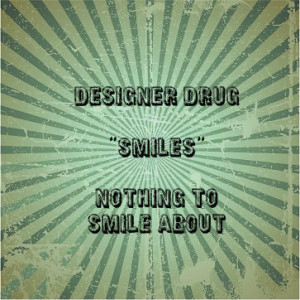 Some compare 2C-I’s effects to a very potent dose of LSD (acid) or MDMA (Molly) because of hallucinations and a feeling of euphoria. This drug, however, appears to be much more dangerous. Side effects include the following:
Some compare 2C-I’s effects to a very potent dose of LSD (acid) or MDMA (Molly) because of hallucinations and a feeling of euphoria. This drug, however, appears to be much more dangerous. Side effects include the following:
- Nausea and vomiting
- Muscle spasms
- Paranoia
- Seizures
- Raised blood pressure
- Kidney failure
What Are The Dangers Of 2C-I?
Unlike the more common hallucinogens, such as LSD and psilocybin (magic mushrooms), which typically do not cause overdoses, 2C-I may cause severe bodily harm, even at small doses. The white powder form of 2C-I is impossible to tell apart from other substances, and it can easily pass off as LSD when mixed into candy or blotting paper, putting casual LSD users at risk of experiencing 2C-I’s more severe side effects, or worse, an overdose. In addition, 2C-I can be difficult to detect by emergency room doctors, with many toxicology tests coming back negative. This could be due, in part, to smiles being laced with other compounds. Like heroin and other synthetics, smiles is notoriously impure. There is currently no established lethal dose of 2C-I, but the drug has been implicated in a number of deaths, both in the U.S. and Europe.
“Smiles” Overdose Tragedies
According to local news reports, in the summer of 2012, 17-year-old Elijah Stai of Park Rapids, Minn., ingested a fatal dose of smiles in a candy bar given to him by a friend. Only an hour later, while hanging out at the local McDonald’s, Stai’s smiles trip took a turn for the worse. His distraught friends and other eyewitnesses describe him acting “possessed”: hyperventilating, making strange sounds and repeatedly hitting his head against the floor. His worried friends took him back home in an attempt to let him calm down and “ride out” the high, but the day ended in tragedy. Less than two hours later, Stai stopped breathing. His story was sadly mirrored by another death in a nearby city just the day before when police found the body of a teen on a sidewalk; he had also suffered a fatal smiles overdose. Police blamed both incidents on a “bad batch” of 2C-I that was circulating on the streets at the time.
The story of the teens serves as a somber reminder of how dangerous synthetic drugs can be. Even if most 2C-I “trips” end without any tragic consequences, there’s no telling how safe the next dose will be, or if it’s even pure 2C-I. Experts are urging extreme caution around these drugs and warn that teens are especially likely to experiment with them.
Read More About The Dangers Of Designer Drugs


